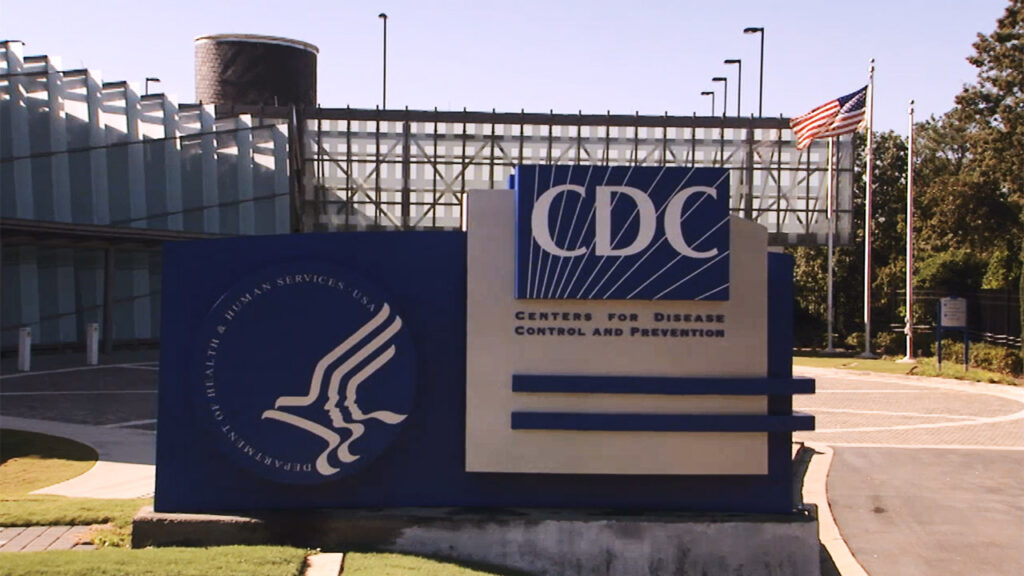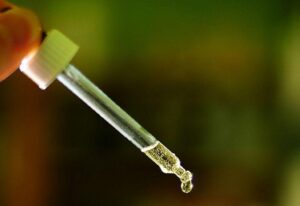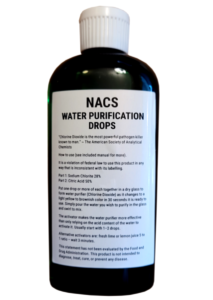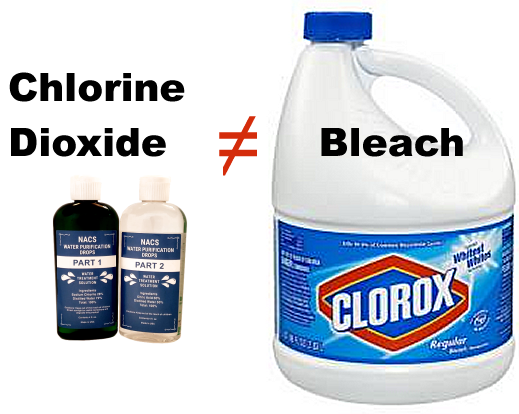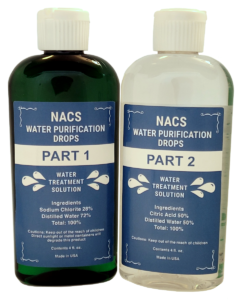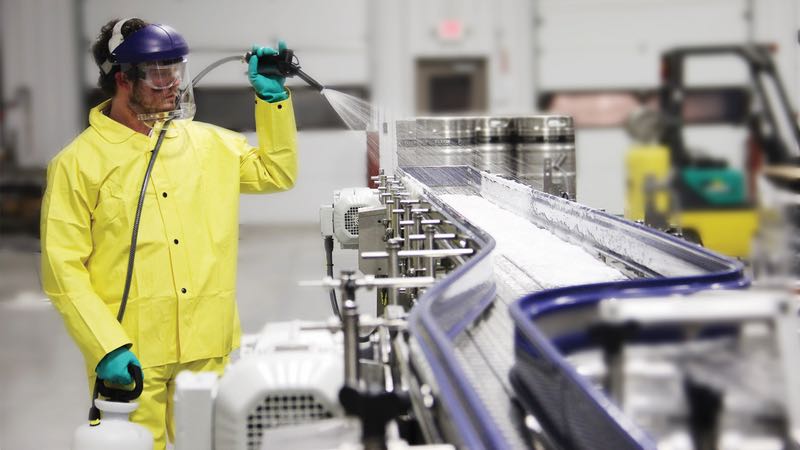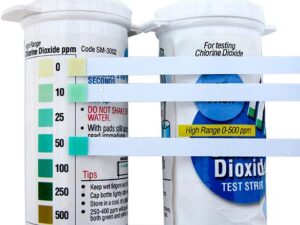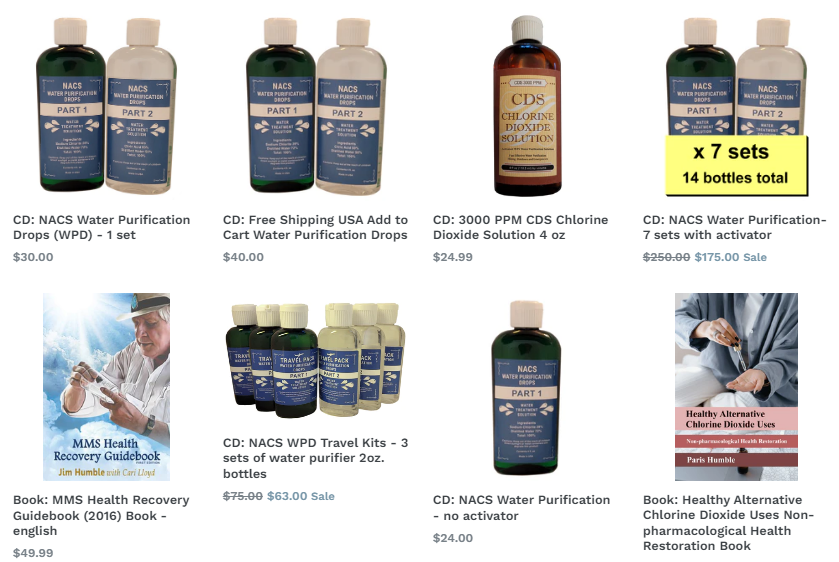For occupational hazards of using chlorine dioxide in commercial and industrial applications, check your facility’s Material Safety Data Sheets (MSDS) for specifics. A general Occupational Health Guideline for Chlorine Dioxide can be found here from the CDC.
For those who are using over-the-counter chlorine dioxide water purification drops, there may be side effects from using too many drops at once for whatever reason. Since everyone is different and we all have varying degrees of sensitivity to certain ingredients, if you’re not going to follow the directions, you could suffer adverse reactions.
According to the FDA, if you drink chlorine dioxide, you could encounter life-threatening side effects, including, severe vomiting, severe diarrhea, life-threatening low blood pressure caused by dehydration, acute liver failure, and death after drinking chlorine dioxide.
Even if one follows the directions concisely, one may experience ill effects, such as nausea, diarrhea, or other symptoms, based on one’s sensitivity to the standard number of drops dosage. It is suggested that if one suffers an adverse reaction, one reduces the dose by one-half.
For instance, if you have put two drops in an 8-ounce glass of water and experienced an adverse reaction, then the next time (at least one hour later) try using only one drop in an 8-oz glass. If you still feel like you’re not feeling well, you could reduce the dose to one-half a drop by doubling the amount of water. In this case, one drop in 16 ounces of water.
Be certain to follow the directions on the bottle, and reduce the dose, if necessary, and as the FDA warns, never drink chlorine dioxide straight without diluting per instructed or less if you experience chlorine dioxide side effects.
Clorox Chlorine Dioxide
Is Clorox chlorine dioxide? No, though part of the same family of chemicals, Clorox’s active ingredient is sodium hypochlorite. Chlorine dioxide is a chemical that is derived from mixing sodium chlorite with an acid activator (like citric acid). The resulting mixed gas is chlorine dioxide. Clorox or any other brand or generic brand of bleach is based on sodium hypochlorite, while chlorine dioxide is based on sodium chlorite. These are very different solutions, though they are both utilized industrially as bleaches.
Both non-scented and non-colored Clorox or other bleaches can be used to purify drinking water in an emergency. Chlorine dioxide is more commonly used by the military, scientific expeditions, outdoorsmen, campers, and hikers, to purify surface water, making it safe to drink.
Clorox is fairly good at generally killing waterborne pathogens, such as bacteria, viruses, molds, and protozoans. Where Lorox and other chlorine bleaches fall short in the war for sanitization, is that there are many pathogens that are chlorine-resistant and therefore Clorox or other chlorine bleaches will have little or no effect on them.
On the other hand, chlorine dioxide efficiently kills the following chlorine-resistant pathogens:
Acanthamoeba castellani1, Actinomycetes2, Adenovirus3, Aspergillus niger4, Bacillus Lichenformis5, Bacillus Subtillis6, Biofilm Bacteria6, Campylobacter jejuni7, Clostridium botulinum8, Clostridium perfringens9, Coxsackie Virus10, Cryptosporidium11, E. coli12, Echovirus10, Eikelboom type 021N13, Entamoeba histolytica14, Giardia15, Gram Positive spore forming bacilli2, Hepatitis A16, Klebsiella pneumoniae17, Listeria monocytogenes18, Methylobacterium19, Micrococci2, Mycobacterium chelonei20, Mycobacterium fortuitum20, Noroviruses3, Norwalk Virus3, Polio virus3, Pseudomonas aeruginosa6, Rhodotorula flava20, Rotavirus20, Salmonella enterica Serovar Typhimurium DT10421, SARS-CoV-2 (coronavirus/COVID-19 ), Snow Mountain Agent Virus3, Tetrahymena pyriformis1, Thiothrix spp.13, Toxoplasma gondii22, Vibrio Chlolerae21, and Yersinia enterocolytica4.
Other attributes that separate chlorine dioxide from ordinary bleach besides being much less corrosive, include chlorine dioxide’s ability to destroy biofilm, hydrogen sulfides, heavy metals, and harmful metallics.
This is why you find chlorine dioxide in use industrially in everything from municipal water treatment and food and drink processing to hospital sanitization and air filtration systems.
So, to answer your question, is Clorox sodium chloride? The answer is, No. Though they are relatives in the sodium chemical arena.
Chlorine Dioxide Strips
When people search for chlorine dioxide strips, they are most likely looking for chlorine dioxide test strips that are readily available for testing the concentration of chlorine dioxide in water.
How do chlorine dioxide strips work?
Chlorine dioxide strips work like any other chemical testing strip. You dip the strip into the water that you want to test, then retrieve the testing strip that should now have a specific color or shade of color displayed. By holding the strip up to a color chart, you can determine the relative concentration of the chemical in the water. In this case, chlorine dioxide.
Chlorine dioxide strips are available over the counter at many retailers, like Walmart, Grainger, and Amazon.com, as well as scientific/laboratory, swimming pool, and hot tub suppliers.
